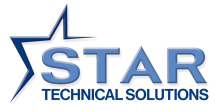Ammonia Hazard Assessments (AHAs)
Due to its environmental credentials and high operational efficiency, Ammonia (R717) as a refrigerant has seen a renaissance in use over the past 20 years. This includes use in industry sectors, such as Building Services, where historically its application has been either limited or non-existent.
The introduction of ammonia into a facility will place specific Health & Safety responsibilities on the owner / operator, particularly to address the combined issues of flammability and toxicity associated with its use as a refrigerant. In the UK there is a legislative obligation to address the flammability issue under the Dangerous Substances and Explosive Atmospheres Regulations (DSEAR) 2002 and to address the toxicity risk under the Management of Health and Safety at Work Regulations (MHSWR) 1999.
STS has been supporting clients for more than 15 years, to ensure compliance with the key requirements under DSEAR and MHSWR, which include:
- Understanding the duties under the regulations
- Preparation of site specific risk assessments
- Identification of places where risks may occur
- Elimination or reduction of risks from dangerous substances
- Arrangements to deal with incidents, accidents and emergencies
- Obligations to inform, instruct and train
To this end, the AHAs STS prepares are specific to the equipment installed at the site; considering its design & build, its location and the safety systems incorporated into it. The risk assessment considers and numerically scores the potential frequency and severity of each element of risk, to give an overall Risk Rating, and dispersion models particular to the site are included to gauge the potential severity of flammability and toxicity effects. The dispersal modelling carried out uses software supplied by the US Environmental Protection Agency. It considers various release scenarios and weather conditions to ascertain ammonia concentrations away from the point of release. The assessment is made based on proposed or existing control measures and we also suggest any further control measures that would assist in reducing or eliminating the potential frequency or severity ratings. Observations on any other safety related issues identified are also typically made.
As well as AHAs on existing systems, STS recommends their preparation at the design / pre-installation stage; defining the safety systems necessary to mitigate risk to a level that is as low as reasonably practicable. This allows clients to understand the implications of using ammonia refrigeration systems on the site, both in terms of cost and operational impact. The document can then be used as an audit tool to ensure all appropriate health and safety requirements are in place and operational on completion of installation and commissioning.
STS has prepared AHAs for a wide range of system types and clients, including:
Arla Foods, ASDA, Bar Foods, Tesco, Yearsley Logistics, 2 Sisters Food group, DHL, Meadow Foods, Dairy Crest, GSK Irvine, GSK Worthing, Cargill Meats, Tulip, The Time Capsule, New Britain Oils, Unilever Gloucester, Birds Eye Lowestoft, Wiseman Dairies, Premier Foods, apetiito, Nestle Buxton, Nestle Hayes, Nestle York, Prosper de Mulder, Kerry Foods, Lanarkshire Ice Rink, Honeywell, Blakemans, Dunbia Group, Faccenda, Chelmsford Ice Rink, Blue Water Shopping Centre, International Maritime Organisation.
